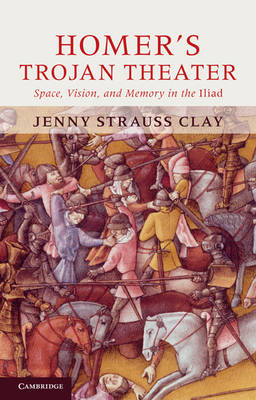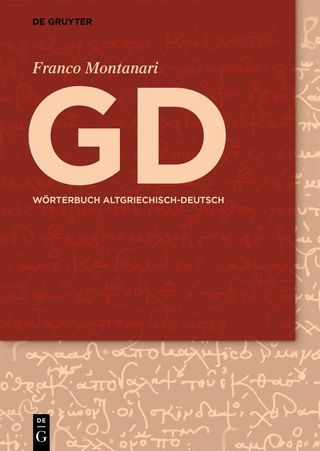
Homer's Trojan Theater
Space, Vision, and Memory in the IIiad
Seiten
2011
Cambridge University Press (Verlag)
978-0-521-14948-8 (ISBN)
Cambridge University Press (Verlag)
978-0-521-14948-8 (ISBN)
This highly innovative and accessible study by one of the world's leading Homeric scholars applies research in cognitive psychology and visual memory to offer a new way of understanding how the Iliad poet envisions and renders visible his narrative. Essential reading for all scholars, teachers and students of Homer.
Moving away from the verbal and thematic repetitions that have dominated Homeric studies and exploiting the insights of cognitive psychology, this highly innovative and accessible study focuses on the visual poetics of the Iliad as the narrative is envisioned by the poet and rendered visible. It does so through a close analysis of the often-neglected 'Battle Books'. They here emerge as a coherently visualized narrative sequence rather than as a random series of combats, and this approach reveals, for instance, the significance of Sarpedon's attack on the Achaean Wall and Patroclus' path to destruction. In addition, Professor Strauss Clay suggests new ways of approaching ancient narratives: not only with one's ear, but also with one's eyes. She further argues that the loci system of mnemonics, usually attributed to Simonides, is already fully exploited by the Iliad poet to keep track of his cast of characters and to organize his narrative.
Moving away from the verbal and thematic repetitions that have dominated Homeric studies and exploiting the insights of cognitive psychology, this highly innovative and accessible study focuses on the visual poetics of the Iliad as the narrative is envisioned by the poet and rendered visible. It does so through a close analysis of the often-neglected 'Battle Books'. They here emerge as a coherently visualized narrative sequence rather than as a random series of combats, and this approach reveals, for instance, the significance of Sarpedon's attack on the Achaean Wall and Patroclus' path to destruction. In addition, Professor Strauss Clay suggests new ways of approaching ancient narratives: not only with one's ear, but also with one's eyes. She further argues that the loci system of mnemonics, usually attributed to Simonides, is already fully exploited by the Iliad poet to keep track of his cast of characters and to organize his narrative.
Jenny Strauss Clay is the William R. Kenan, Jr, Professor of Classics at the University of Virginia and the author of The Wrath of Athena: Gods and Men in the Odyssey (1983), an influential study of the Odyssey, The Politics of Olympus (1989), a groundbreaking study of the Homeric Hymns, as well as numerous articles on Greek and Roman poetry. Her book Hesiod's Cosmos (2003) offers a new and coherent synthesis of the Theogony and the Works and Days.
Introduction; 1. The sighted Muse; 2. Envisioning Troy; 3. Homer's Trojan theater.
| Erscheint lt. Verlag | 10.2.2011 |
|---|---|
| Zusatzinfo | Worked examples or Exercises |
| Verlagsort | Cambridge |
| Sprache | englisch |
| Maße | 136 x 215 mm |
| Gewicht | 210 g |
| Themenwelt | Geschichte ► Allgemeine Geschichte ► Altertum / Antike |
| Geisteswissenschaften ► Sprach- / Literaturwissenschaft ► Anglistik / Amerikanistik | |
| Geisteswissenschaften ► Sprach- / Literaturwissenschaft ► Latein / Altgriechisch | |
| Geisteswissenschaften ► Sprach- / Literaturwissenschaft ► Literaturwissenschaft | |
| Schlagworte | Homer |
| ISBN-10 | 0-521-14948-7 / 0521149487 |
| ISBN-13 | 978-0-521-14948-8 / 9780521149488 |
| Zustand | Neuware |
| Haben Sie eine Frage zum Produkt? |
Mehr entdecken
aus dem Bereich
aus dem Bereich
Die unglaubliche Geschichte eines antiken Söldnerheeres
Buch | Hardcover (2022)
C.H.Beck (Verlag)
28,00 €
die Inszenierung der Politik in der römischen Republik
Buch | Hardcover (2023)
C.H.Beck (Verlag)
48,00 €


